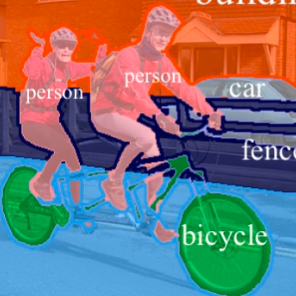One of the most neglected sources of energy loss is streetlights which generate too much light in areas where it is not required. Energy waste has enormous economic and environmental effects. In addition, due to the conventional manual nature of the operation, streetlights are frequently seen being turned ON during the day and OFF in the evening, which is regrettable even in the twenty-first century. These issues require automated streetlight control in order to be resolved. This study aims to develop a novel streetlight controlling method by combining a smart transport monitoring system powered by computer vision technology with a closed circuit television (CCTV) camera that allows the light-emitting diode (LED) streetlight to automatically light up with the appropriate brightness by detecting the presence of pedestrians or vehicles and dimming the streetlight in their absence using semantic image segmentation from the CCTV video streaming. Consequently, our model distinguishes daylight and nighttime, which made it feasible to automate the process of turning the streetlight 'ON' and 'OFF' to save energy consumption costs. According to the aforementioned approach, geolocation sensor data could be utilized to make more informed streetlight management decisions. To complete the tasks, we consider training the U-net model with ResNet-34 as its backbone. The validity of the models is guaranteed with the use of assessment matrices. The suggested concept is straightforward, economical, energy-efficient, long-lasting, and more resilient than conventional alternatives.
翻译:能源浪费中最被忽视的问题之一就是路灯,在不需要太多光线的区域产生过多的光线。能源浪费会带来巨大的经济和环境影响。此外,由于传统手动操作的性质,路灯经常在白天被打开,在晚上被关闭,即使是在21世纪也是令人遗憾的。这些问题需要自动路灯控制来解决。本研究旨在通过将由计算机视觉技术驱动的智能交通监控系统与闭路电视(CCTV)摄像头相结合,通过检测行人或车辆的存在并使用CCTV视频流中的语义图像分割来调整适当亮度而使LED路灯自动点亮,并在它们不在时调暗路灯,从而开发一种新型的路灯控制方法。因此,我们的模型能够区分日夜,这使得自动打开和关闭路灯以节省能源消耗成本的过程成为可能。根据上述方法,可以利用地理位置传感器数据做出更明智的路灯管理决策。为完成任务,我们考虑使用ResNet-34作为U-Net模型的骨干进行训练。使用评估矩阵保证模型的有效性。所提出的概念简单、经济、节能、长寿命,比传统的替代方案更具有弹性。



